Sigma 300mm F/2.8 APO ZEN
Super telephoto prime lens • Film era • Discontinued
Abbreviations
| APO | Apochromatic optical design. |
Model history (3)
| ■Sigma 300mm F/2.8 APO ZEN | A | 12 - 9 | 2.50m | -- | 1988 ● | |
| ■Sigma 300mm F/2.8 APO EX [HSM] | A | 11 - 9 | 2.50m | -- | 1999 ● | |
| ■Sigma 300mm F/2.8 APO EX DG [HSM] | A | 11 - 9 | 2.50m | -- | 2005 ● | |
Specification
| Optical design: | |
| 35mm full frame | |
| 300mm | |
| F/2.8 | |
| 12 elements in 9 groups | |
| 2 SLD | |
| Internal focusing (IF) | |
| Floating element system | |
| Canon EF [44mm] | |
| Minolta/Sony A [44.5mm] | |
| Nikon F [46.5mm] | |
| Sigma SA [44mm] | |
| 8.2° (35mm full frame) | |
| On Canon EOS APS-C [1.59x] cameras: | |
35mm equivalent focal length: | 477mm (in terms of field of view) |
35mm equivalent speed: | F/4.5 (in terms of depth of field) |
Diagonal angle of view: | 5.2° |
| On Sony DSLR-A/SLT-A APS-C [1.53x] cameras: | |
35mm equivalent focal length: | 459mm (in terms of field of view) |
35mm equivalent speed: | F/4.3 (in terms of depth of field) |
Diagonal angle of view: | 5.4° |
| On Nikon D APS-C [1.53x] cameras: | |
35mm equivalent focal length: | 459mm (in terms of field of view) |
35mm equivalent speed: | F/4.3 (in terms of depth of field) |
Diagonal angle of view: | 5.4° |
| On Sigma SD APS-C [1.74x] cameras: | |
35mm equivalent focal length: | 522mm (in terms of field of view) |
35mm equivalent speed: | F/4.9 (in terms of depth of field) |
Diagonal angle of view: | 4.7° |
| Diaphragm mechanism: | |
Diaphragm type: | Automatic |
Aperture control: | None; the aperture is controlled from the camera (Canon EF, Minolta/Sony A, Sigma SA) |
| Aperture ring (Manual settings + Auto Exposure setting) (Nikon F) | |
| 9 (nine) | |
| Focusing: | |
| 2.50m | |
| 1:7.66 | |
Focusing modes: | Autofocus (A), Manual focus (M) |
Autofocus motor: | Micromotor (Canon EF, Sigma SA) |
| In-camera motor (Minolta/Sony A, Nikon F) | |
Manual focus control: | Focusing ring |
Focus mode selector: | Focus Clutch Mechanism |
Manual focus override in autofocus mode: | - |
| Optical Stabilizer (OS): | |
| - | |
| Physical characteristics: | |
| 2030g (Nikon F) | |
| ⌀120×223mm (Nikon F) | |
| Accessories: | |
| Removable front filters are not accepted | |
Additional features: | Drop-in filter holder (30.5mm) |
| Built-in telescopic round | |
| Sigma APO Tele Converter 1.4X EX → 420mm F/3.9 | |
| Sigma APO Tele Converter 1.4X EX DG → 420mm F/3.9 | |
| Sigma APO Tele Converter 2X EX → 600mm F/5.6 | |
| Sigma APO Tele Converter 2X EX DG → 600mm F/5.6 |
Source of data
- Manufacturer's technical data.
Manufacturer description #1
- World's fastest and lightest telephoto lens in its class.
- Sigma SLD (Special Low Dispersion) glass plus Apochromatic and Double-Floating Focus Design for dramatically superior contrast and color correction throughout the focusing range.
- Highly maneuverable for sharp, hand-held long lens images.
- Special dry lubricant and internal focus mechanism assures smooth focusing even in sub-zero temperatures.
- Built-in lens hood and front protective filter.
Manufacturer description #2
Even at ultra-telephoto 300mm, compactness and performance are very stringent. Sigma's APO 300mm uses an apochromat and an inner focusing mechanism for an overall length of just 223mm, in spite of having an aperture of F2.8. Ultra-compact, it weights just 2030g. Also, the use of SLD glass restricts chromatic aberration to extreme limits and obtains excellent images. Single-finger focusing is smooth, fast and precise for manual focusing. Closest focusing distance is 250cm. Equipped with front-end protective glass, it is also suited for outdoor use.
From the editor
Introduced at Photokina 1988.
Notes
- The autofocus will not be available with Nikon D40, D40X, D60, D3000-D3500, D5000-D5600 digital SLR cameras.
- Sigma had to reverse engineer the communication protocol of the Canon EF mount to produce a version of this lens for Canon EOS 35mm film SLR cameras. As a consequence, this lens may not work properly with Canon EOS cameras (both film and digital) due to compatibility issues.
Frequently asked questions
What does the Sigma lens designation "ZEN" mean?
It means that the lens has a ZEN finish. ZEN is an acronym for Zeitgeist ("the spirit of the times"), Enhancement, and Nonglare. This nonreflective urethane resin finish was introduced around 1989 and replaced the old-style, painted satin-black finish. Sigma claimed it to be hard, strong, antichemical, nonslip, antiglare, and scratch-resistant, however, it actually had a tendency to peel off and become sticky as it aged.

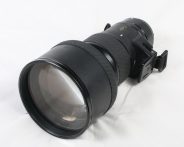
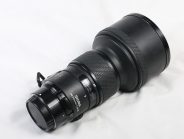
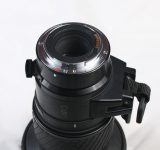


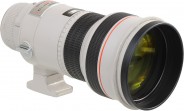
![Sigma 300mm F/2.8 APO EX DG [HSM]](https://lens-db.com/wp-content/uploads/2012/07/sigma_300_f2-8hsm-184x107.jpg)
![Sigma 300mm F/2.8 APO EX [HSM]](https://lens-db.com/wp-content/uploads/2012/07/sigma-apo-300-28-01-98x150.jpg)
![Tamron SP AF 300mm F/2.8 LD [IF] 360E](https://lens-db.com/wp-content/uploads/2012/03/tamron-360e-03-100x150.jpg)






![Sony 300mm F/2.8 G SSM [SAL300F28G]](https://lens-db.com/wp-content/uploads/2012/07/300ssmsd1z-91x150.jpg)
![Sony 300mm F/2.8 G SSM II [SAL300F28G2]](https://lens-db.com/wp-content/uploads/2012/09/8b6bf02e150906798914ba8b12ab486b-184x92.jpeg)
![Tamron SP AF 300mm F/2.8 LD [IF] 60E](https://lens-db.com/wp-content/uploads/2012/07/tamron-sp-300-28-ld-if-01-64x150.jpg)




![Nikon AF Nikkor 300mm F/2.8 ED-IF [II]](https://lens-db.com/wp-content/uploads/2015/03/nikon-af-300-28-ed-03-126x150.jpg)
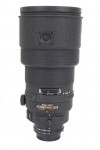
![Nikon AF Nikkor 300mm F/2.8 ED-IF [I]](https://lens-db.com/wp-content/uploads/2012/10/af-300-28-ed-02-101x150.jpg)